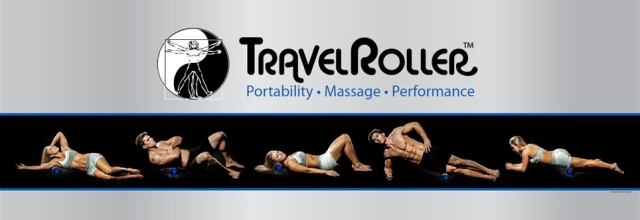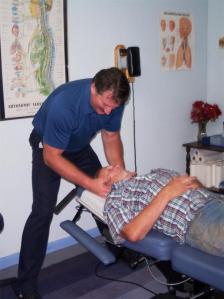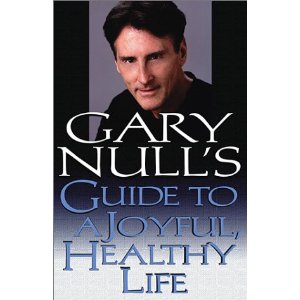If you’ve not already checked out Part 1 to this article where I review the entire self myofascial release (foam rollers, etc) product market, do so, as you’ll be seeing these items in the videos that accompany this article and you may have questions about them which are thoroughly addressed there.
Let’s begin this adventure with a sort of disclaimer: I don’t profess to be a guru of anything. I’m not going to go all sciency about this subject because that information is easily found on the internet and the target of this audience is the common personal trainer or the masses who could benefit from self myofascial release, which includes my clients and athletes. If you find this information useful, I would greatly appreciate the pass on to your people!
I’ve rarely met a person who takes advantage of self myofascial release to the degree I do. I literally do some form of it 2-4 times a day. I’ve been testing myself and various products along with teaching such techniques I learn to my clients for the past 4 years. That’s the extent of my guru-ism.
I don’t want to go on and on about the subject as I have done 1.5hours worth of videos for you on this (to follow) which should cover the basics.
Let the life-changing adventure begin…
Why To
I use this analogy a lot: have you ever seen how a 5-year-old runs? It’s a little crazy, buck wild and incredibly fluid (more like Jello unleashed) but terribly uncoordinated.

Now, have you seen how your 80-year-old grandmother moves? Stiff, scared and overly coordinated (the body just doesn’t handle the proprioception and depth perception as well hence the falls that equate to so many hip injuries; aside from bone density issues).

So, somewhere along the line we start trading fluidity for coordination. I believe it starts in the parking lot of the grocery store. And it’s worst in the population 25-45 years old. You lose it during those years and you’re in for a rough ride my friends!
We started building parking lots with pretty little bushes and shrubs and other landscaping that as civilized adults we decided we should walk around instead of hopping over, around and down off of. Not me, I’m going to jump over everything until I die because if you don’t use it, you lose it!

I’m careful not to destroy the pretty, but I’m quite certain the shortest distance between the car (point A) and the grocery entrance (point B) is a straight line. I ain’t walking around this; I’m going to leap, bound and skip my way into the store.
Without proper pliability in the fascia and muscle tissue, proper flexibility, proper stability and proper range of motion in the joints you start losing it. Your 5 year old thinks jumping off the roof of your house is doable. Grandma can’t jump off the curb!
Enough with the analogies. I’ve personally seen injuries occur more because of imbalance in the body than actual trauma. Imbalance can be flexibility issues between one hip flexor versus the other side; it can be imbalance in glute size and strength versus the other butt cheek; it can be shoulder range of motion differences between the sides; it can be that your lower traps are too weak to keep your scapula (shoulder blades) depressed. Whatever.
So we should all do yoga until we’re perfectly even, right? No, that’s not the answer (though it can be for some). Learning your body and not letting things get too far outta whack is the answer! It’s extremes that hurt us.
And it’s here that regular self myofascial release can offer its greatest rewards.
Who Decided The Name Should Be Self Myofascial Release? What am I releasing?
Talking with a bunch of coaches that have been using SMR for some time or a massage therapist and they’ll squirm at the term self myofascial release. A massage therapist would argue that you’re not really getting between the fascia so therefore it’s more of a simple self massage. A physiology nerd would say it’s incorrect to use the term “release” as there is no release of anything.
In all reality the better term would probably be “Resetting.” As you are taking a part of the body that has become less mobile, perhaps to the point of developing scar tissue, and trying to massage it to its “normal” tension and length – or resetting the body. So for this reason I will refer more to the actions and goals of SMR (the name we’re stuck with) as resetting.
How To
I’m going to break this down into two sections: Self myofascial release (SMR) for pre-workout warm ups and SMR for recovery (done post workout or between workouts at home). When it comes time to watching the videos, watch this Guidelines one first. There is over 90 minutes total to these videos so do invest your time with the sheer amount of information I spent covering each body part and subject.
Basic Steps of SMR
1. Scan: using whichever tool is right for the job (as explained in the Guidelines video), scan the area at a calm pace; not too slow; not too fast just cover the entire area to:
2. Identify: where is that trigger point? What’s the size of it? Does it hurt more when I’m putting pressure left to right, diagonal or up and down? Is this a common place for me to have it (and if so is it getting better or worse)? Can I remember a reason this area might be all “jacked up?”
3. Dig: I know not what a better term to call this without making up some fancy sounding lingo. Forget that. You dig at it with THE APPROPRIATE level of tension. What’s appropriate? Enough you can relax on that point. If you’re holding your breath, going blue in the face, flexing every muscle in the body because it hurts so bad: you’ll get nothing out of this AND probably worsen the situation.
4. BREATHE! Same as above, you need to teach the body that hey, there is this point of tension that’s a waste of energy holding onto, that may be ruining normal movement function that it’s okay to let that tension go. Massage the tension away while relaxing around the trigger point.
5. Mobilize: this is just a good idea. Once you’ve done some digging and feel like there is a slight (or great) “resetting” of the area then move the joints above and below it. You’ll see better what I mean in the videos.
SMR During the Warm Up
Warm ups shouldn’t take 1 hour. A good guideline is if I plan to spend 60 minutes doing my actual workout that 1/4 to 1/3 of that time should be added to warming up: so 15-20 minutes. The best use of that time is 5-8mins self myofascial release, 10-12 mins of stretching, dynamic movement and mobility drills as well as any physiotherapy type drills you may have been prescribed by a PT because you were recently injured.
Why SMR right before going into a workout? Quite simply to make the fascia and muscles more pliable, to help increase joint range of motion that may be suffering because of trigger points in common “problem areas” such as the lats (back armpit area), IT band (high side by hip) and feet/calve stiffness. Even if a client comes in late I get them on a ball for the glutes, feet, shoulders, and foam rolling the IT band, lats and triceps. Takes 3-5 mins. Probably saves my clients a great deal of injuries that may have occurred if they just walked in (from their car posture), stressed out and jumped right into a workout. Don’t skimp here.
I must caution that getting a client on the ground for 15 minutes “rolling” is doing diddly squat to get them ready for a hard workout, in fact most of my clients walk in nervous for what’s to come (as they should, it’s hard work!) and numbing their nervous system by taking them through a host of painful movements laying all over the ground is most likely not the right answer. So address problem sites only and cover the rest in the post workout or between workout recovery SMR sessions.
I think it’s wise to start at the feet for the SMR warm up series. After that I’m not overly partial to the order as I would be with my dynamic mobility warm ups.
Here are the Warm Up Series videos:
Guidelines: http://www.youtube.com/watch?v=2QPRIm_awqc
Feet: http://www.youtube.com/watch?v=EmXQvtlDIjs (recovery series wouldn’t be much different save for that I would spend A LOT more time on my poor feet which I stand on for 12+hrs a day)
Dual Tennis Ball (mostly thoracic spine): http://www.youtube.com/watch?v=MtnlDucoOWk (recovery series would be the same save for more time spent deep breathing)
Glutes: http://www.youtube.com/watch?v=3xlXVLT-Ht8 (recovery series would be the same; I don’t like foam rollers for glutes, save for maybe my Rumble Roller)
Chest & Biceps: http://www.youtube.com/watch?v=FTj562-vNeQ
Shoulders (especially rear delts): http://www.youtube.com/watch?v=bmWZgCAWGPM
Legs: http://www.youtube.com/watch?v=w3DhtfCeeKA
SMR During the Cool Down or Between Workouts
Generally speaking the same techniques used in the warm up could work for the cool down and between workouts to keep the body tissues pliable but unlike the warm up laying on a roller and being all over the floor is a good idea. Spending significant time doing between-workout SMR is probably the single greatest advancement an athlete or workout enthusiast can make towards their performance (after adequate sleep and proper food intake, of course). It is a major game changer!

Will it completely replace the need for manual therapists? No, of course not. Nothing is ever fully going to replace you just relaxing on a table as a qualified and capable massage therapist gets in there and works their magic. Or a good chiropractor with ART who knows about the body in relation to sport and active movement functions. Or a good, caring physical therapist who can teach you about how to deal with that nagging injury.
BUT, SMR will save you from having to go so often. It will in time save you a load of money. It will in time save you a great deal of minor injuries, aches and pains. It may even, in time (as it has for me) be a go-to tool for relieving daily stress. It’s going to save you time, money and aches and pains. Enough said as to why you should be doing it!
When’s the absolute best time for recovery SMR? Post workout to target the areas you just finished working, and right before bed to get the ultimate “resetting” effect.
So without further ado, the Recovery Series videos:
Guidelines (if you’ve not already watched them): http://www.youtube.com/watch?v=2QPRIm_awqc
Entire Legs: http://www.youtube.com/watch?v=YP_90BgFxEE
Hip Flexors & Tensor Fasciae Latae (TFL): http://www.youtube.com/watch?v=6YD9VFu-S_U
Lats & Triceps: http://www.youtube.com/watch?v=Tms-Xcb76Yk (as mentioned above, a lot of the time I will use this same drill during the warm up, especially when doing any vertical upper body pulling motions or heavy pressing)
Chest: http://www.youtube.com/watch?v=rClOpWJT1WA
Entire Back (except for lats which is covered in lats/triceps video above): http://www.youtube.com/watch?v=hvQBIso2wEw

Now, that’s what I’m talking ’bout!
Further Education
I will say a great extent of my “education” from outside sources has been from Nick Tumminello via his Secrets of Self Myofascial Release product (found here) as well as the information I picked up from a recent 2 day seminar of his I attended. There have been many articles posted on my favorite website: T-Nation.com about the subject from various sources as well (use the search function there). Lastly, I’ve found a lot of great information from the DVD that comes with the Travel Roller product. So if you want to delve deeper, try there.
If you’re unsure which product is best for you, again, go back to Part 1 of this article and decide from there or feel free to leave a comment on either article and I’ll do my best to help.
BTW, you can now find me on:
Instagram @adriancroweathletictraining
Facebook page at Adrian Crowe Athletic Training “The Crowe’s Nest”
YouTube www.youtube.com/acathletictraining
or email me directly at adrian@adriancrowe.com



































